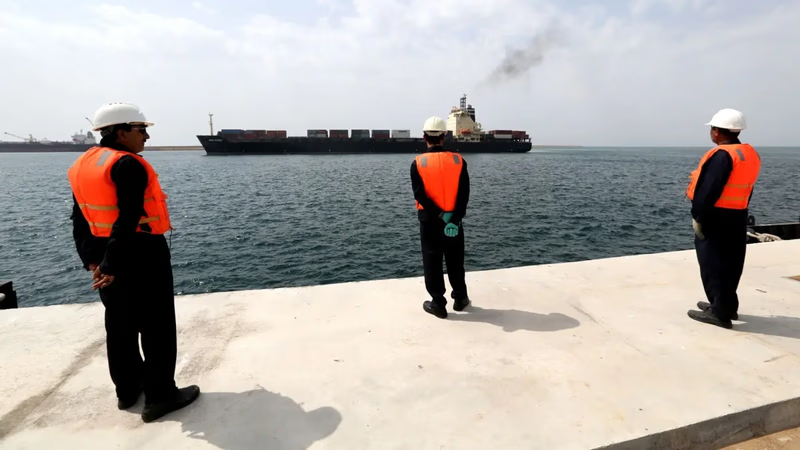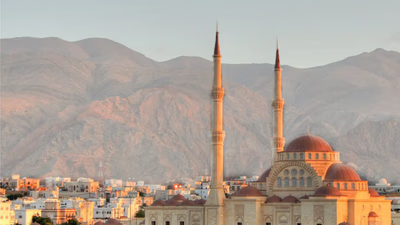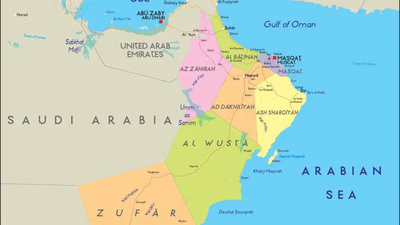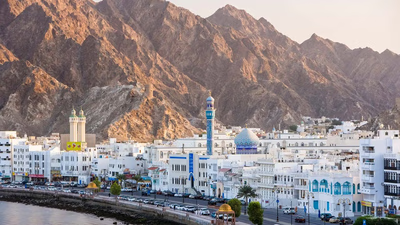
Oman"s ports facilitate Middle East trade and B2B marketplace growth. "
Proper documentation is essential for exporting goods to Oman. This includes a commercial invoice, packing list, bill of lading or airway bill, and a certificate of origin. The invoice and packing list should provide detailed information about the goods, such as description, quantity, value, weight, and packaging. Each product is classified under a specific HS code, which is used to determine the applicable customs duties and regulations. It is important to correctly identify and declare the HS code for your goods when exporting to Oman. Oman has specific regulations regarding the importation of certain goods. It is important to check the list of prohibited and restricted items to ensure compliance. Prohibited items may include narcotics, weapons, certain types of animals, and counterfeit goods. Restricted items may require additional permits or approvals for importation.
Certain goods may be subject to export controls and require permits or licenses, especially those related to sensitive technologies, dual-use items, or military equipment. It is important to check the export control regulations of your home country and ensure compliance when exporting such goods to Oman. Engaging the services of a customs broker or freight forwarder with experience in Oman can help navigate the customs procedures and ensure compliance with regulations. They can assist with documentation, customs clearance, and logistics.
Two mountain beaches overlooked the Gulf of the West in the western part of Oman, which is more than 2500 feet. The depth of water in most parts is more than fifteen meters, which reaches more than 9 meters in the coast. In fact, this Gulf is one of the natural harbors of the region. The second Gulf, which is more important is located in the eastern part of the al-Jawal, and the extent of its span reaches three miles and extends to a distance of 9 miles. The depth of water is from 27 meters to 33 meters, and it is possible that the bay will be in the future as anchorage and port for a large fleet.
Ports of Oman
- Qaboos Port: Currently, the most important and most equipped port of Oman, which is relatively modern, is also based on Muscat and during the time of Sultan Qaboos and is being used with full equipment.
- Khasab Port: In the Musandam peninsula, it has been very important for the sake of Oman's forces in this area.
- Sohar port: located in the province of the inside.
- Matrah port is placed in four kilometers northwest of Muscat and is considered to be an important ports of Oman. Given the proper position that this port has a suitable place for the peak of ocean ships. The port of the minerals transmitted by the crude oil pipelines from the domestic areas of Oman to this port is exported.
- Sour port: It is located at 85 miles south-east of Muscat and has more fishing.
- Minnesut Port: This port is special for tanker shipping and is located near Yemen.
- Barakeh Port: Most residents of this port are Iranian and Baluch.
- Lava port: located in the north of the country. The other Ports of Oman are Salela, Suvademi, Maragheh, Khaburah and Suham ports.
Before any action to export to other countries, you must be fully acquainted with the customs and currency laws of that country and get full information in this field, here for you, customs rules and export currency to Oman: The Import of any goods to Oman is only possible by companies registered in Oman, and many foreign businessmen for activities in the market are registered in Oman. Commodities that require after-sales service should have an Omani lawyer to carry out clearance issues. The average customs tariff rates of fruit exports to Oman and other agricultural groups are 4.7%. Some commodities are exempted like livestock, types of meat except for pork, rice, wheat, corn flour, fresh fruit and tea from customs facts.
Oman applies customs duties on imported goods, which vary depending on the nature of the goods and their HS code classification. Additionally, value-added tax (VAT) is applicable to most goods and services in Oman. It is important to consider these costs when pricing your exported goods. Oman has implemented an Authorized Economic Operator program to facilitate trade and provide benefits to compliant and trusted businesses. Becoming an AEO can streamline customs processes and expedite clearance procedures. Goods should be appropriately packaged and labeled according to international standards. The labels should include product details, country of origin, handling instructions, and any required safety or warning labels.
-

Oman is predominantly an Islamic country, with the majority of its population practicing the Ibadi sect, known for its moderation and tolerance. Arabic is the official language, but English is widely spoken, especially in urban areas. Other languages such as Baluchi and Hindi are also common due to historical ties and trade. The cultural practices of Oman reflect its Islamic heritage, with traditional clothing like the Deshdashe for men and hijabs for women being prevalent. Understanding Omani customs is essential for visitors to enhance communication and appreciation of local traditions. The coexistence of various Islamic sects, including Shiites and Sunnis, contributes to a rich cultural tapestry where significant religious occasions are observed collectively. This cultural insight is vital for those engaging in trade or business networking in Oman, as it fosters better relationships with local partners. The country"s unique blend of tradition and modernity makes it an attractive destination for both tourism and commerce. "
-

Exporting goods to Oman requires meticulous documentation, including a commercial invoice, packing list, bill of lading, and certificate of origin. Each product must be classified under a specific HS code to determine applicable customs duties and regulations. It is crucial to identify and declare the correct HS code when exporting. Oman has strict regulations regarding prohibited and restricted items, which may include narcotics, weapons, and counterfeit goods. Certain goods may also require export permits or licenses, particularly those related to sensitive technologies or military equipment. Engaging a customs broker or freight forwarder experienced in Omani regulations can facilitate compliance with customs procedures. Oman boasts several key ports such as Qaboos Port and Sohar Port, which are vital for trade operations. The average customs tariff for agricultural exports is around 4.
7%, with some commodities exempt from duties. Additionally, value-added tax (VAT) applies to most goods in Oman. Businesses looking to streamline their operations can benefit from the Authorized Economic Operator program that expedites customs processes for compliant companies. Proper packaging and labeling according to international standards are essential for successful exports.
-

Oman, located on the southeastern coast of the Arabian Peninsula, shares borders with the UAE, Saudi Arabia, and Yemen. Its capital, Muscat, is a vibrant city known for its rich history and cultural attractions. The geography of Oman features rugged mountains, vast deserts like the Wahiba Sands, and a stunning coastline along the Arabian Sea. Muscat serves as a key maritime hub with Port Sultan Qaboos facilitating trade and tourism. The city blends traditional charm with modern developments, offering attractions such as the Sultan Qaboos Grand Mosque and Royal Opera House. Oman"s climate is characterized by hot summers and milder winters, with high humidity along the coast. The local culture is deeply rooted in tradition, reflected in its cuisine and hospitality. Oman actively promotes tourism to showcase its natural beauty and heritage, making it an appealing destination for travelers seeking adventure and cultural experiences. "
-

Oman is strategically positioned within the Gulf Cooperation Council, collaborating closely with Saudi Arabia, UAE, Qatar, Bahrain, and Kuwait on economic and security matters. Its relationships extend globally, notably with the United States and the United Kingdom, focusing on trade and defense. China stands out as Oman"s largest trading partner, accounting for a significant portion of both exports and imports. Other key partners include India, Japan, and Saudi Arabia. Oman’s import landscape features machinery, fossil fuels, steel products, and food items. The country is enhancing its infrastructure to boost trade capabilities and attract foreign investment. Recent years have seen a surge in construction-related imports as Oman develops new economic zones. Iranian traders are also active in exporting construction materials to Oman.
The nation’s geographic location near the Indian Ocean positions it as a vital regional trade hub. Oman"s proactive approach to fostering international partnerships aims to strengthen its economic standing in West Asia.
-

Oman"s climate is characterized by extremely hot summers, with temperatures often exceeding 40°C (104°F) in coastal areas and even higher inland. The hottest months are June, July, and August, with minimal rainfall and high humidity along the coast. Winters are milder, ranging from 20 to 30°C (68 to 86°F) during the day, with cooler nights. Muscat experiences very little annual rainfall, averaging about 100 mm (4 inches), primarily from December to April. Dust storms can occur during summer months due to northerly winds. Oman"s geographical location near the equator contributes to its hot climate, which can deter migration compared to cooler countries. However, Oman has diversified its economy by reducing oil dependence and enhancing tourism and fishing industries. Coastal areas benefit from the moderating effects of the Arabian Sea and Gulf of Oman, leading to more pleasant temperatures than the interior regions. The southern region of Dhofar experiences a unique monsoon season known as Khareef from June to September, bringing significant rainfall and transforming landscapes into lush greenery.





